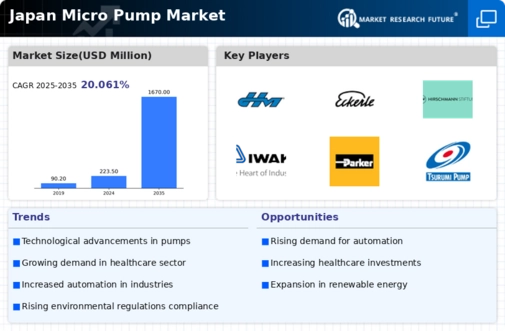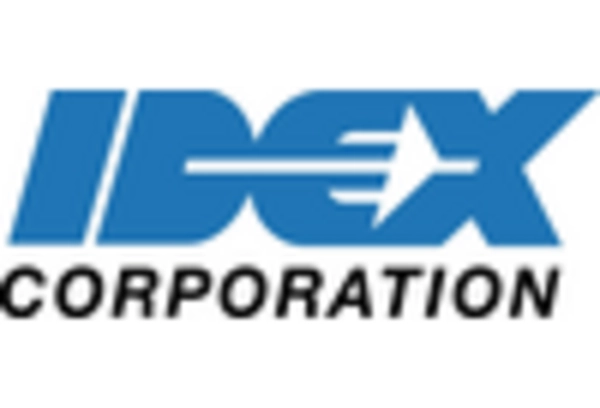Growth in Pharmaceutical Sector
Japan's pharmaceutical sector is witnessing robust growth, which is significantly impacting the micro pump market. With an increasing focus on drug delivery systems, micro pumps are being utilized for precise dosing and administration of medications. The pharmaceutical industry in Japan is expected to reach a market value of approximately $100 billion by 2026, creating a substantial demand for micro pumps. These devices are essential for applications such as insulin delivery and other chronic disease management solutions. As the micro pump market aligns with the evolving needs of the pharmaceutical sector, it is poised for expansion, driven by innovations in drug formulation and delivery technologies.
Advancements in Medical Technology
The micro pump market is significantly impacted by advancements in medical technology within Japan. As healthcare providers seek innovative solutions for patient care, micro pumps are increasingly utilized in medical devices for applications such as infusion therapy and diagnostic equipment. The medical technology market in Japan is projected to grow at a CAGR of around 6% over the next few years, indicating a rising demand for sophisticated medical devices. This growth is likely to drive the micro pump market, as manufacturers develop more advanced and reliable micro pump systems to meet the needs of healthcare professionals and patients alike.
Rising Automation in Manufacturing
The micro pump market in Japan is experiencing a notable surge due to the increasing automation in manufacturing processes. As industries strive for efficiency, the demand for precise fluid control systems has escalated. Micro pumps, known for their accuracy and reliability, are becoming integral in various applications, including automotive and electronics manufacturing. The market is projected to grow at a CAGR of approximately 8% over the next five years, driven by the need for advanced manufacturing technologies. This trend indicates a shift towards more automated systems, where micro pumps play a crucial role in enhancing production capabilities. Consequently, the micro pump market is likely to benefit from this automation wave, as manufacturers seek to optimize their operations and reduce costs.
Environmental Regulations and Compliance
The micro pump market in Japan is also influenced by stringent environmental regulations aimed at reducing waste and promoting sustainability. As industries face increasing pressure to comply with these regulations, the demand for efficient fluid management systems is rising. Micro pumps, which minimize waste and enhance energy efficiency, are becoming a preferred choice for many applications. The market is likely to see a shift towards eco-friendly solutions, with micro pumps playing a pivotal role in achieving compliance. This trend suggests that the micro pump market will continue to evolve, adapting to the regulatory landscape while providing sustainable solutions for various sectors.
Emerging Applications in Consumer Electronics
The micro pump market in Japan is witnessing growth due to emerging applications in consumer electronics. As devices become more compact and sophisticated, the need for precise fluid management systems is increasing. Micro pumps are being integrated into products such as printers, cooling systems, and even beauty devices, enhancing their functionality. The consumer electronics market in Japan is expected to reach approximately $50 billion by 2027, creating new opportunities for the micro pump market. This trend indicates a diversification of applications, suggesting that micro pumps will play a vital role in the evolution of consumer electronics, catering to the demands for efficiency and performance.

















Leave a Comment